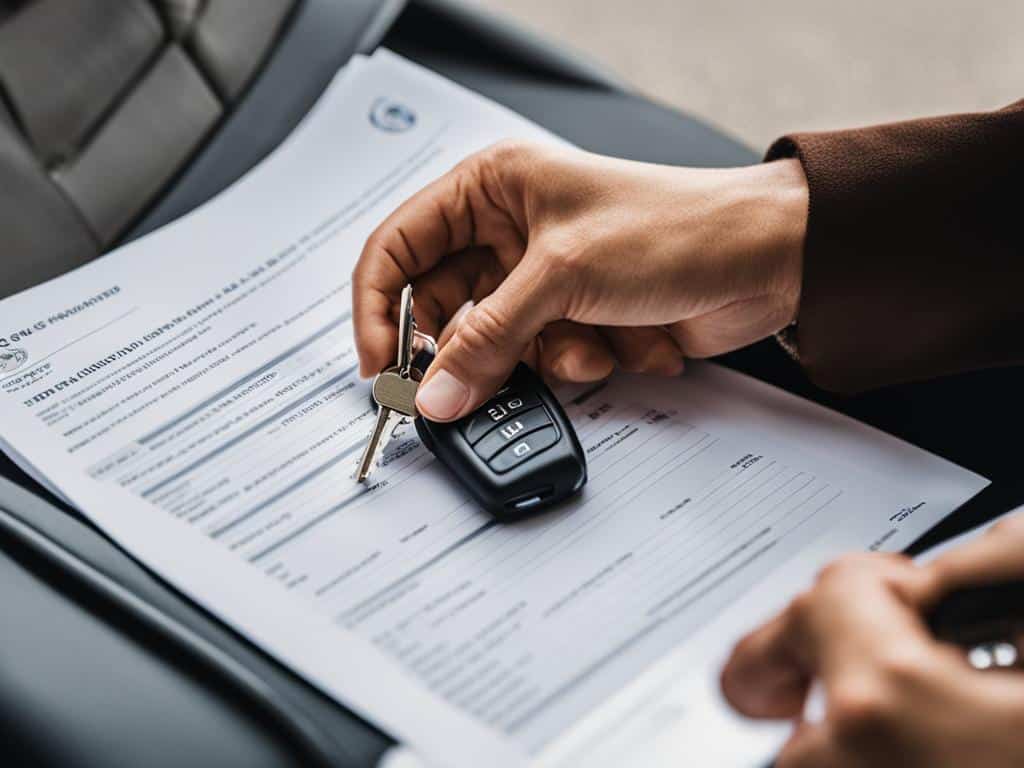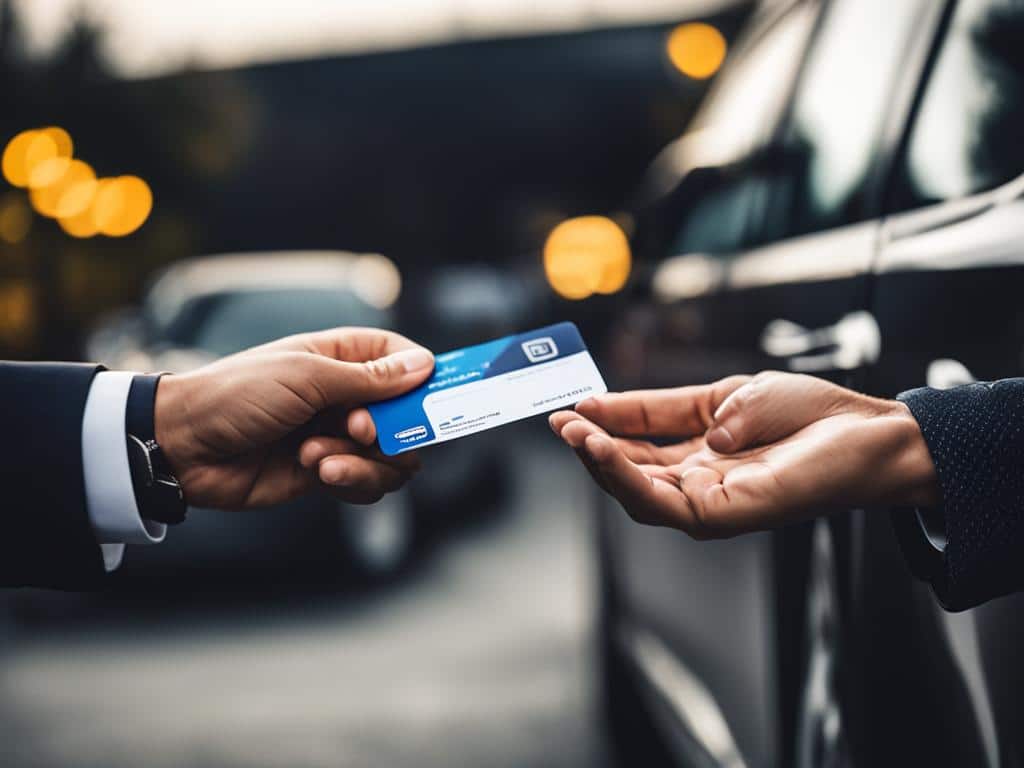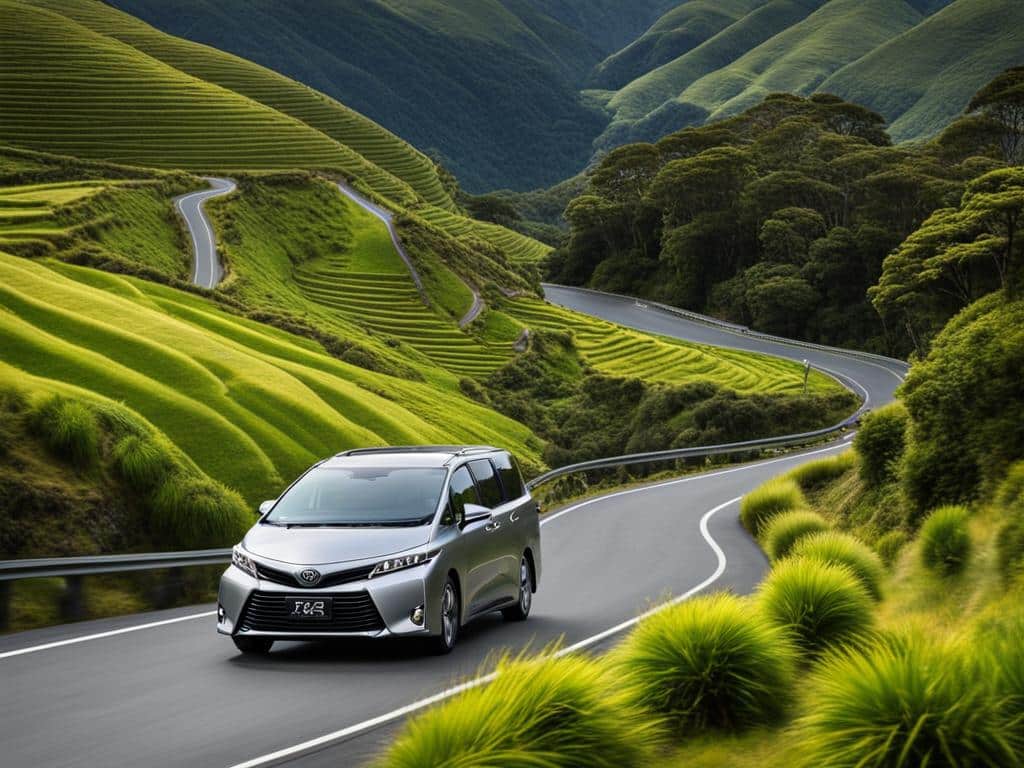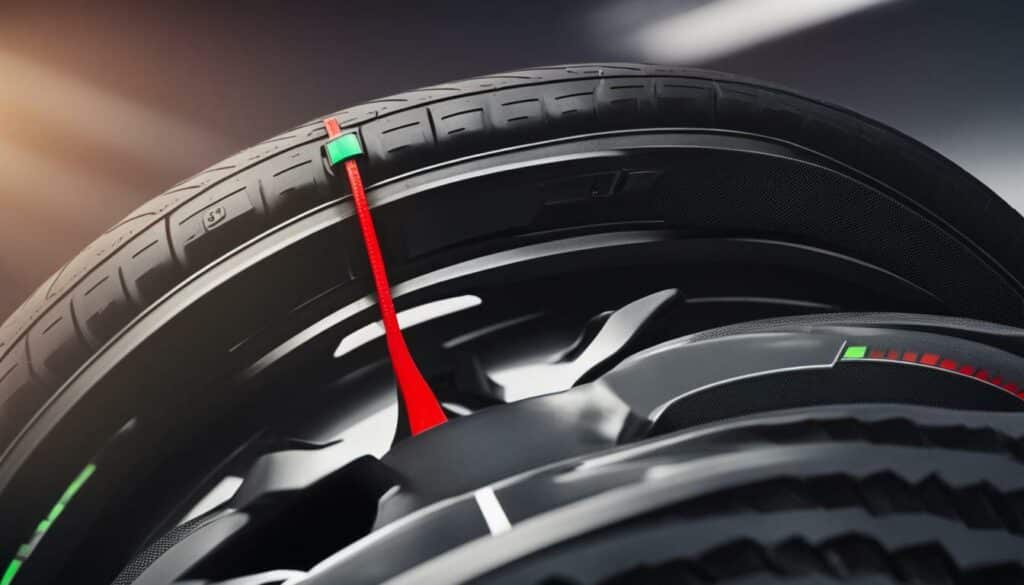Welcome to my comprehensive guide on changing car ownership in New Zealand. Whether you’re buying a new car or purchasing a used one, it’s crucial to understand the steps involved in the vehicle ownership transfer process. By following the correct procedures and staying up to date with legal requirements, you can ensure a smooth and hassle-free transition. In this article, I will walk you through the essential information you need to know to change car ownership in NZ successfully.
Key Takeaways:
- Changing car ownership in New Zealand requires registration and notification to the Waka Kotahi NZ Transport Agency within seven days.
- Both buyers and sellers of used cars need to notify the agency of the ownership change.
- Registering a new car involves specific documentation and notifying the agency to obtain vehicle number plates.
- Keeping your car legally on the road requires a valid Warrant of Fitness (WoF) and a license or ‘rego’.
- Verify the registered person for a vehicle before making a purchase to ensure a smooth ownership transfer.
How to Register a New Car in NZ
If you have recently purchased a new car or imported one to New Zealand for the first time, it is crucial to register the vehicle. Registering a new car requires specific documentation and involves notifying the Waka Kotahi NZ Transport Agency. By following the proper registration process, you can ensure that your new car is officially recognized and legally compliant.
To register your new car, you will need to provide proof of purchase and identification documents. These may include the sales invoice, purchase agreement, or receipt, as well as your driver’s license or passport. Make sure to gather all the necessary paperwork before initiating the registration process.
Once you have the required documents, visit the Waka Kotahi NZ Transport Agency’s website for detailed instructions on how to register your new car. You will need to fill out the registration form and submit the supporting documentation. After reviewing your application, the agency will issue vehicle number plates and add your car’s details to the Motor Vehicle database.
Remember that registering your new car is an important step in the process of changing vehicle ownership. It ensures that your car is recognized by the appropriate authorities and helps maintain the integrity of the national vehicle registration system.
Table: Documents Required for Registering a New Car in NZ
| Document | Description |
|---|---|
| Proof of Purchase | An official document that proves you have legally acquired the new car, such as a sales invoice, purchase agreement, or receipt. |
| Identification | Personal identification documents that establish your identity, such as a driver’s license or passport. |
By ensuring that you have the necessary documentation and following the registration process outlined by Waka Kotahi NZ Transport Agency, you can successfully register your new car in New Zealand. This will enable you to enjoy your vehicle legally on the roads while ensuring compliance with the country’s regulations and requirements.
Changing Ownership of a Used Car in NZ
When buying a used car in New Zealand, it is important for both the buyer and the seller to notify Waka Kotahi NZ Transport Agency of the change in ownership. This process can be conveniently done online through the agency’s website. It is recommended to complete the notification process on the spot to ensure a seamless transfer of ownership. Remember that the notification must be done within seven days of the purchase to avoid any penalties or issues.
Once the ownership change is complete, the buyer should ensure that they receive a Certificate of Registration in their name. This document serves as proof of ownership and should be kept in a safe place. It is important to note that the Certificate of Registration does not legally prove ownership, but it is a valuable piece of evidence in case any disputes arise.
Transferring ownership of a used car in New Zealand is a straightforward process, but it is crucial to follow the necessary steps and notify the appropriate authorities to ensure a legally compliant transfer. By adhering to the guidelines set by Waka Kotahi NZ Transport Agency, both the buyer and the seller can have peace of mind knowing that the ownership change is properly recorded and documented.
Understanding Warrants of Fitness (WoF) and License (Rego) Requirements
To keep your car legally on the road in New Zealand, you must have a valid Warrant of Fitness (WoF) and license or ‘rego’. The WoF is a regular safety inspection that certifies your vehicle meets the necessary requirements. The frequency of the WoF inspection depends on the age of the vehicle. It is essential to display the WoF sticker on the driver’s side of the windscreen. The license, or ‘rego’, is an ongoing fee that allows you to use your car on public roads. Waka Kotahi NZ Transport Agency will send you a renewal notice before the license expires, and it should be displayed on the passenger’s side of the windscreen.

It is important to stay up to date with the renewal of both your WoF and license to avoid penalties or driving your vehicle illegally. Failure to display a valid WoF sticker or an expired license can result in fines or legal consequences. Regular maintenance and vehicle checks are necessary to ensure your car remains in a roadworthy condition and passes the WoF inspection. These checks include ensuring your lights, brakes, tires, and other essential components are in good working order.
Furthermore, it is important to note that different types of vehicles have different requirements when it comes to WoF inspections. For example, taxis and rental vehicles may have more frequent inspections compared to private vehicles. It is crucial to familiarize yourself with the specific requirements for your vehicle type to avoid any compliance issues. The Waka Kotahi NZ Transport Agency website provides detailed information on WoF and license requirements, including inspection criteria and renewal processes.
Understanding the Warrant of Fitness (WoF) Inspection Checklist
The WoF inspection covers various aspects of your vehicle’s safety, including its structural integrity, lights and signals, brakes, tires, and more. The inspector will assess these components to ensure they meet the required standards. Some common items on the WoF inspection checklist include:
- Brake performance and condition
- Tire condition and tread depth
- Seatbelt operation and condition
- Lighting and signaling systems
- Windscreen condition and visibility
- Exhaust emissions
By regularly maintaining your vehicle and addressing any potential issues promptly, you can increase the likelihood of passing the WoF inspection with ease. It is also worth noting that some vehicle modifications may require additional certification or compliance checks to ensure they meet legal requirements.
| Vehicle Type | WoF Inspection Frequency |
|---|---|
| Private Vehicles | Every 12 months for vehicles less than 6 years old, then every 6 months until the vehicle reaches 12 years old, and annually thereafter |
| Taxis | Every 6 months |
| Rental Vehicles | Every 6 months |
Keeping your car’s WoF and license up to date not only ensures your safety on the road but also helps you avoid potential fines and legal complications. Regularly check the renewal dates for both and make any necessary repairs or maintenance to maintain compliance with the regulations.
Road User Charges for Diesel Vehicles
When it comes to diesel vehicles, road user charges (RUC) play a key role in car ownership. Diesel vehicle owners in New Zealand are required to pay road user charges to ensure compliance with regulations. These charges are necessary to offset the wear and tear that diesel vehicles cause on the road network.
To stay in line with the RUC requirements, diesel vehicle owners must have a current distance license. This license includes paid RUC mileage, which should be displayed on the windscreen next to the license. The distance license can be purchased in 1,000km units, allowing drivers to easily manage their RUC obligations.
| Vehicle Type | RUC Rate (per 1,000km) |
|---|---|
| Light Diesel Vehicle (Gross Laden Weight < 3.5 tons) | $62.24 |
| Heavy Diesel Vehicle (Gross Laden Weight ≥ 3.5 tons) | $71.73 |
| Heavy Diesel Vehicle (Gross Laden Weight ≥ 3.5 tons) – RUC Rebate | $47.27 |
It’s crucial for diesel vehicle owners to ensure their RUC payments are up to date. Failure to comply with the RUC requirements can result in penalties and fines. Regularly checking and paying your RUC mileage will help you avoid any issues and keep your diesel vehicle legal on the road.
Verifying the Registered Person for a Vehicle
Before purchasing a car, it is crucial to verify the registered person for the vehicle. This step ensures that you have accurate information about the current owner and helps prevent potential issues down the line. To verify the registered person, follow these steps:
- Ask the seller for their full legal name and driver’s license number. This information will be used to confirm their identity.
- Visit the Confirm Registered Person service provided by Waka Kotahi NZ Transport Agency.
- Enter the seller’s details, including their legal name and driver’s license number, into the online tool.
- Click the “Search” button to check if the entered details match the registered person record.
If the details match and the registered person is confirmed, you can proceed with the purchase of the vehicle. However, if the details do not match or the registered person is unconfirmed, it is advisable to ask the seller to complete the previous change of ownership process before proceeding with the purchase. It is important to note that being the registered person does not legally prove ownership of the vehicle. To further protect yourself, it is recommended to have a vehicle sales agreement and purchase receipt as evidence of the transaction.

Why Verify the Registered Person?
“Verifying the registered person for a vehicle is an essential step in the car ownership transfer process. It helps ensure that you are dealing with the rightful owner and reduces the risk of purchasing a vehicle with disputed ownership. By confirming the registered person’s details through the Waka Kotahi NZ Transport Agency’s online tool, you can have peace of mind knowing that the transaction is legitimate.”
By following these verification steps, you can make informed decisions when purchasing a car and minimize the chances of encountering ownership issues. Remember to prioritize your safety and protect your interests throughout the process.
| Steps | Description |
|---|---|
| 1 | Obtain the seller’s full legal name and driver’s license number. |
| 2 | Visit the Confirm Registered Person service provided by Waka Kotahi NZ Transport Agency. |
| 3 | Enter the seller’s details into the online tool. |
| 4 | Check if the entered details match the registered person record. |
Additional Considerations for Vehicle Re-registration and Inspection
When it comes to re-registering a vehicle in New Zealand, there are a few additional considerations to keep in mind. If the vehicle has previously been registered in the country, you will need to provide evidence of this, such as a certificate of registration or a LANDATA record. It is important that the person presenting the vehicle for re-registration is the same as the registered person or can provide a clear ownership trail.
Different inspection and certification processes apply depending on the type and age of the vehicle. For pre-1991 vehicles, additional inspections may be required to ensure compliance with the applicable requirements. It is crucial to follow the guidelines provided by the Waka Kotahi NZ Transport Agency to ensure a successful re-registration process.
To illustrate the different inspection and certification requirements for vehicles of different ages, it is helpful to provide a table:
| Vehicle Age | Inspection and Certification Requirements |
|---|---|
| Newer than 2000 | No additional inspections required, standard WoF and license renewal process |
| 1991-2000 | Additional inspection for structural integrity and rust prevention |
| Pre-1991 | Comprehensive inspection for safety, emissions, and structural integrity |
This table clearly outlines the different requirements depending on the age of the vehicle and provides a helpful reference for vehicle owners looking to re-register their cars.
Conclusion
Changing car ownership in New Zealand involves several important steps and considerations. By following the proper procedures for car registration, notifying authorities of ownership changes, and meeting legal requirements such as Warrants of Fitness and licenses, you can ensure a safe and compliant vehicle. It is essential to have the necessary documentation, notify the appropriate authorities, and stay informed about any updates or regulations. With these measures in place, the process of changing car ownership in NZ can be smooth and hassle-free.
In summary, to facilitate a successful car registration transfer in NZ, it is crucial to promptly notify Waka Kotahi NZ Transport Agency of any ownership changes. Whether you are buying or selling a used car or registering a new vehicle, ensuring that the necessary paperwork is completed accurately and within the specified timeframe is vital. Additionally, maintaining the validity of your Warrant of Fitness (WoF) and license or ‘rego’ is essential to legally operate your vehicle on New Zealand roads. By adhering to these requirements and staying informed, you can navigate the process of car ownership transfer in NZ with confidence and peace of mind.
In conclusion, changing car ownership in New Zealand requires attention to detail and compliance with legal obligations. By understanding the steps involved, obtaining the necessary documentation, and staying up to date with the requirements, you can successfully transfer car ownership in NZ. Remember, proper car registration, timely notifications, and adherence to Warrant of Fitness and license requirements are crucial aspects of maintaining a legally compliant and safe vehicle. By following the guidelines provided by Waka Kotahi NZ Transport Agency, you can smoothly navigate the process and enjoy a seamless transition of car ownership in New Zealand.
FAQ
What should I do after purchasing a car in New Zealand?
After purchasing a car in New Zealand, you should register the vehicle with Waka Kotahi NZ Transport Agency and notify them of the ownership change within seven days to avoid fines or infringements.
What documents are required to register a new car in New Zealand?
To register a new car in New Zealand, you will need specific documentation, including proof of purchase and identification. Visit the Waka Kotahi website for more information on the registration process and the necessary car ownership documents.
How do I notify Waka Kotahi NZ Transport Agency of a change in ownership for a used car?
Both the buyer and the seller need to notify Waka Kotahi NZ Transport Agency of the change in ownership for a used car. This can be done online through the agency’s website. It is recommended to complete the notification process on the spot to ensure a seamless transfer of ownership.
What are Warrant of Fitness (WoF) and license (rego) requirements in New Zealand?
To keep your car legally on the road in New Zealand, you must have a valid Warrant of Fitness (WoF) and license or ‘rego’. The WoF is a regular safety inspection that certifies your vehicle meets the necessary requirements. The license, or ‘rego’, is an ongoing fee that allows you to use your car on public roads.
Do diesel vehicles have additional requirements for road user charges (RUC)?
Yes, if your vehicle uses diesel, you must pay road user charges (RUC). Diesel vehicles need to have a current distance license with paid RUC mileage displayed on the windscreen next to the license.
How can I verify the registered person for a vehicle I want to buy?
Before purchasing a car, you can verify the registered person by asking for their full legal name and driver’s license number. Visit the Confirm Registered Person service provided by Waka Kotahi NZ Transport Agency to check if the entered details match the registered person record.
What considerations should I keep in mind for vehicle re-registration and inspection?
When re-registering a vehicle in New Zealand, you will need to provide evidence of previous registration, such as a certificate of registration or LANDATA record. The person presenting the vehicle for re-registration must be the same as the registered person or provide a clear ownership trail. Different inspection and certification processes apply depending on the vehicle type and age.




